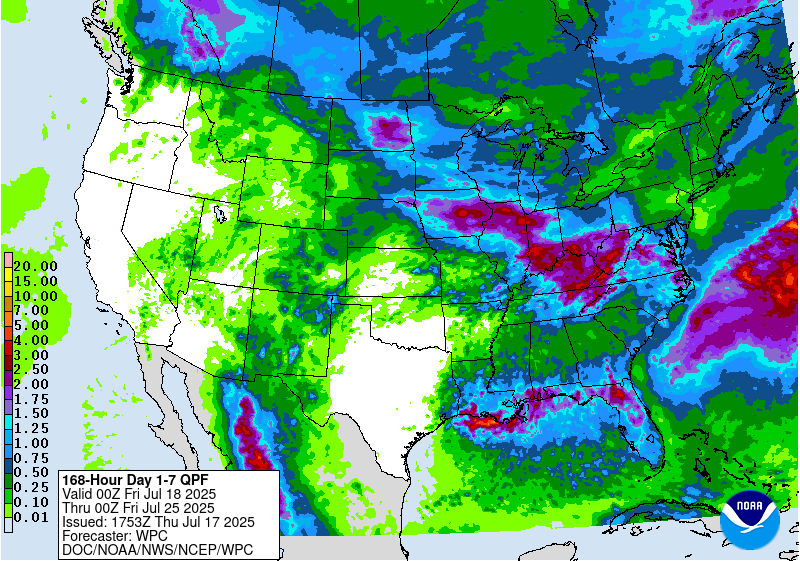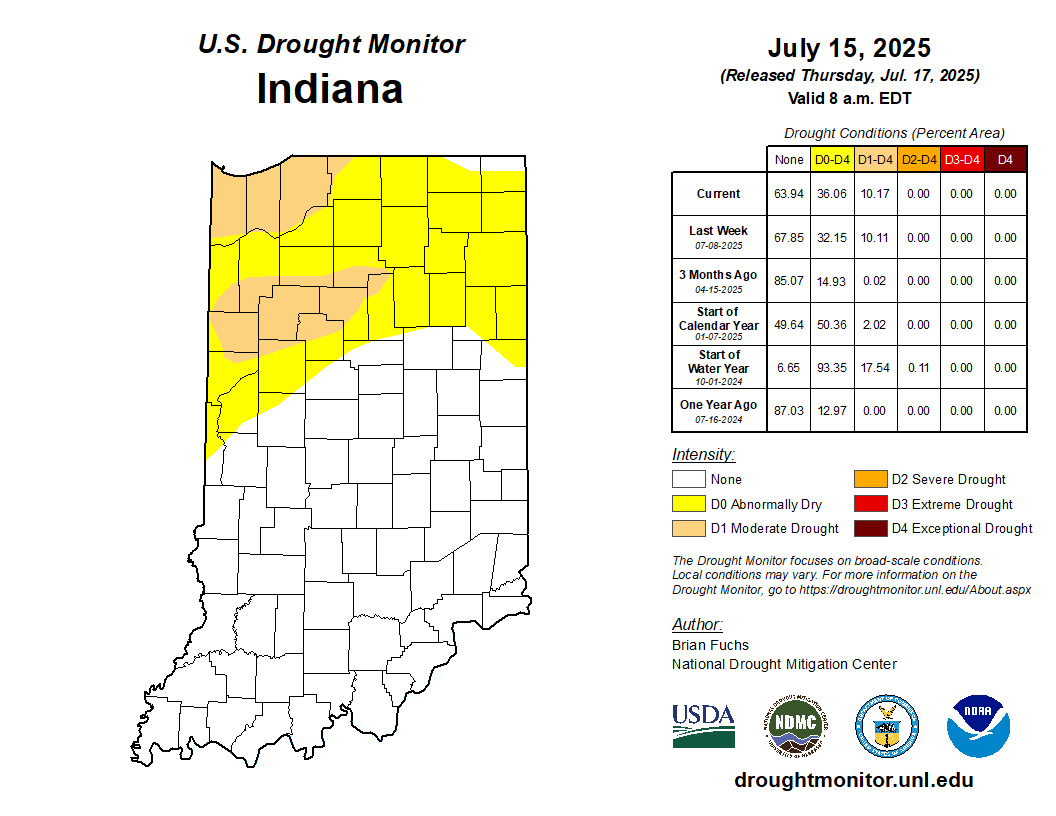Precipitation forecasts for Indiana over the next 7 days (through late Thursday, July 24) are calling for close to 3 inches (Figure 1). The precipitation is likely to be very scattered where some areas could see a lot, and some may see very little. According to the U.S. Drought Monitor, there is a growing area of Abnormally Dry (D0) conditions in northern Indiana and persistent areas of Moderate Drought (D1) in northwestern Indiana (Figure 2). Most of this rain, therefore, will be welcomed and could help determine if and how much the U.S. Drought Monitor should change next week.
Since scattered precipitation can be unpredictable, forecasters, climatologists, and modelers depend upon observational data from a wide variety of resources. There are federally supported observational networks that collect daily precipitation amounts as well as automated weather stations most often found near airports that report hourly rainfall. While these networks provide critical information, that still leaves a lot of spatial gaps across our state where we are missing observational data. Have you ever seen it rain a few blocks away, but your location didn’t receive a drop? This discrepancy is rarely captured by forecast models.
If you are a weather enthusiast, love contributing to the greater good, and/or enjoy data, I encourage you to consider becoming a CoCoRaHS volunteer observer. CoCoRaHS – which stands for Community Collaborative Rain, Hail, and Snow program – is a citizen scientist effort that invites anyone and everyone to join a network of over 27,000 active observers across the United States and beyond. By agreeing to use a manual, standard 4” rain gauge and submitting observations on a near-daily basis, you’ll be sharing your local observations with the National Weather Service, forecasters, climate scientists, emergency managers, and many others! Please consider joining CoCoRaHS and help us spread the word to recruit more observers.




